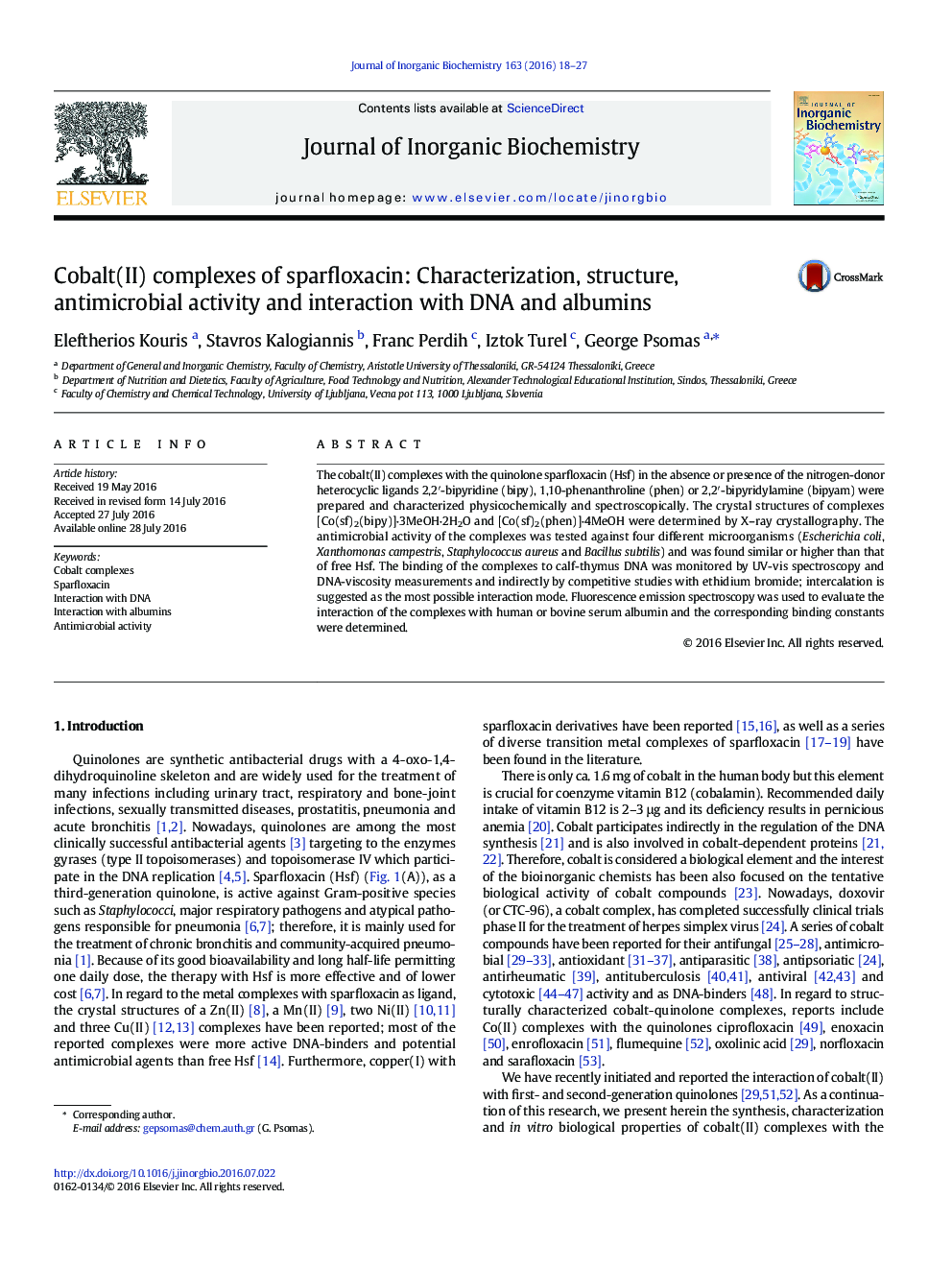| Article ID | Journal | Published Year | Pages | File Type |
|---|---|---|---|---|
| 1315815 | Journal of Inorganic Biochemistry | 2016 | 10 Pages |
•Four cobalt(II) complexes with sparfloxacin as ligand were characterized.•The crystals structures of two mixed-ligand complexes were determined.•The complexes show noteworthy antimicrobial activity.•The complexes can bind to human or bovine serum albumins.•Intercalation is the most possible binding mode of the complexes to calf-thymus DNA.
The cobalt(II) complexes with the quinolone sparfloxacin (Hsf) in the absence or presence of the nitrogen-donor heterocyclic ligands 2,2′-bipyridine (bipy), 1,10-phenanthroline (phen) or 2,2′-bipyridylamine (bipyam) were prepared and characterized physicochemically and spectroscopically. The crystal structures of complexes [Co(sf)2(bipy)]∙3MeOH∙2H2O and [Co(sf)2(phen)]∙4MeOH were determined by X–ray crystallography. The antimicrobial activity of the complexes was tested against four different microorganisms (Escherichia coli, Xanthomonas campestris, Staphylococcus aureus and Bacillus subtilis) and was found similar or higher than that of free Hsf. The binding of the complexes to calf-thymus DNA was monitored by UV-vis spectroscopy and DNA-viscosity measurements and indirectly by competitive studies with ethidium bromide; intercalation is suggested as the most possible interaction mode. Fluorescence emission spectroscopy was used to evaluate the interaction of the complexes with human or bovine serum albumin and the corresponding binding constants were determined.
Graphical abstractFour cobalt(II)-sparfloxacin complexes with nitrogen- and/or oxygen-donors as co-ligands were characterized exhibiting noteworthy antimicrobial activity and binding affinity for albumins and calf-thymus DNA.Figure optionsDownload full-size imageDownload as PowerPoint slide
